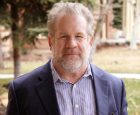

Columns/Blogs
Features
Future of Work
HR News
HR’s reinvention: Moving from benchmarking, best practices to guidance
By Dave Ulrich, Norm Smallwood and Alan Todd
 (metamorworks/Adobe Stock)
(metamorworks/Adobe Stock) Like other functions (and organizations, leaders, and individuals), HR needs to continually reinvent itself to realize its potential for creating, delivering, and capturing value.
Recently, we have had conversations with thoughtful HR trendsetters. They almost all propose reinventing HR through benchmarking and best practices.
Benchmarking reports how well HR is doing against a standard (global, industry, or historical norm) to build on strengths or to overcome weaknesses; best practices suggest how to improve by learning from others. Both have had a long history in shaping the HR profession and both will continue to be important, but we must take them a step further.
Now is the time to reinvent HR by pivoting from benchmarking and best practice to guidance.
Instead of improving by comparing oneself to others and by adapting what others do well, we must move beyond these descriptions of HR work to prescriptions.
Descriptions chronicle what has been or is being done; prescriptions anticipate what should be done. Descriptions focus on activities or initiatives; prescriptions focus on results.
Descriptions compare oneself to others; prescriptions show how to improve oneself to achieve desired results. Descriptions benchmark and seek best practices; prescriptions guide choices to deliver results through vested practices.
We have reviewed how benchmarking should pivot to guidance. Let us now propose why best practice focus needs to evolve to make guidance happen.
Management guru Dave Ulrich to deliver keynote at Work 4.0 event
Pervasiveness of, and challenges to, best practices
For decades, all of us in the human capital profession have relied on best practice logic. We observe what leading companies do and try to distill and share that information with others.
Best practice work shows up as case studies of leading companies in seminars, talks, articles, books, workshops, and training sessions. Best practice work shows up when consulting firms recommend to their clients the innovative work that their other clients have done.
But using best practices falls short when human capital issues become ever more central to changing business conditions.
Consider the following examples:
Best practices focus on others and not oneself
Here’s how this might be remedied: At a personal level, I don’t need to be as (fill in the blank: well-dressed, wealthy, educated, cheerful) as someone else, but I do need to take care of myself well enough to have personal well-being and fulfill my potential.
In human capital work, comparing to and learning from others is good, but the primary agenda should be determining whether or not the human capital “best” practice will help your company meet its unique goals. The benchmark should not be others but yourself and working toward personalized goals.
Best practices focus backward more than forward
Learning what others have done will always leave you behind them as they reinvent.
As one leader said, “I hope others will copy our programs today because by the time they have copied them, we have moved on to the next practice. They will never catch up by copying us.”
Best practices are often piecemeal and not systemic
Too often a best practice is considered in isolation (for example, here is what a leading company did in leadership training), but not within the entire context (leadership training occurs in the context of hiring, performance management, executive commitment, cultural norms, and so forth).
Adapting only a piece of the overall system does not often transfer success to another setting.
Best practices create circular thinking
Observing and learning from others often causes us to share existing ideas rather than innovate new ideas. Progress comes from spiraling forward more than recycling the past.
Benchmarking that leads to using best practices has been and will be a fundamental approach to improving human capital. But to reinvent HR, we need to build on that work and meaningful pivot to guidance (see figure).
| Benchmarking | Best Practice | Guidance | |
| Answers the question: | How do I compare to others? | What are others doing that I can learn from? | What human capital initiatives should I invest in to deliver key results? |
| Starts with …
|
How am I doing?
|
What are others doing?
|
What should I be doing?
|
| Improve through …
|
Build on strengths;
overcome weaknesses |
Learning and mimicking what others have done | Investing in initiatives that deliver results |
| Fundamental assumption
|
Description | Imitation | Prescription |
| Primary analytics tools | Dashboards/
scorecards |
Insights and interventions | Impact and outcomes |
| Breadth | Generally scores on single human capital area (talent, leadership, or organization) | Accesses others’ practice in a specific human capital initiative | Evaluates which human capital area (talent, leadership, organization, HR) and initiative delivers results |
Moving to guidance
Guidance builds on benchmarking (which sets a baseline for how your organization compares to others) and best practices (highlighting which practices others have successfully used).
Guidance focuses on what should be done to deliver your organization’s results from human capital investments.
Step 1: Define desired results
HR is not about HR but about helping five stakeholders receive outcomes that matter to them: employee (productivity and well-being), strategy (direction and execution), customer (net promoter score and customer share), investor (financial results and intangible confidence), and community (reputation).
Step 2: Classify human capital initiatives
There are thousands of human capital initiatives (processes, practices, or interventions) that have been and can be implemented.
We have classified these complex ideas into four human capital categories and identified specific initiatives in each pathway: talent (9 initiatives), leadership (6 initiatives), organization (12 initiatives), and human resources (9 initiatives).
These four pathways and 36 initiatives capture the breadth of human capital.
Step 3: Measure human capital initiatives
Each of the 36 human capital initiatives can be measured several different ways: by perception of employees within the organization through surveys, with indicators from organization data (for example, productivity of employees measured by revenue or profit per employee, etcetera), or by public indicators accessed through social media.
For example, in the United States, the Securities Exchange Commission (SEC) now requires disclosure of human capital metrics that can be compared to others.
Step 4: Determine which human capital initiatives deliver desired results
Algorithms determine which of the 36 human capital initiatives impact each of the five stakeholder results.
These algorithms provide guidance about where to invest in human capital to deliver the outcomes that matter.
Step 5: Invest in the human capital initiatives that matter most
Once the prioritized human capital initiatives are identified, they can be innovated and improved.
Instead of putting resources into what other companies are doing (best practices), companies can invest in tailored work they should do to achieve their outcomes.
Step 6: Monitor the impact of the human capital investments on results over time
An organization guidance system is not a single event or snapshot, but a longitudinal evaluation of which human capital investments lead to desired outcomes.
These six steps sound easy; they are not.
They require a fundamental pivot from focusing on benchmarking and best practices to using guidance to innovate impactful initiatives.
The good news is that we have spent two years creating an organization guidance system that validates that that guidance is not only valuable but possible. Even more, starting is easy. Go to www.rbl.ai to take the short assessment and receive a free report.
Going forward, we envision any business or HR leader talking about human capital to be less focused on doing what others do and more committed and informed about what they can do within their organization to achieve their desired outcomes.
Instead of talking generically about the latest HR trends in (fill in the blank: employee experience, digital HR, agility, HR design), business and HR leaders can prioritize and invest in specific HR initiatives that create, deliver, and capture value.
We strongly believe that now is the time for HR to reinvent itself by moving beyond benchmarking and best practices to guidance.
 Dave Ulrich is the Rensis Likert Professor at the Ross School of Business, University of Michigan and a partner at the RBL Group, a consulting firm focused on helping organizations and leaders deliver value. He is known for continually learning, turning complex ideas into simple solutions, and creating real value to those he works with in three fields.
Dave Ulrich is the Rensis Likert Professor at the Ross School of Business, University of Michigan and a partner at the RBL Group, a consulting firm focused on helping organizations and leaders deliver value. He is known for continually learning, turning complex ideas into simple solutions, and creating real value to those he works with in three fields.
 Norm Smallwood is a recognized authority in developing businesses and their leaders to deliver the right results the right way. His current work relates to increasing business value by building organization, leadership, and people capabilities that measurably impact market value. In 1999, Norm co-founded The RBL Group with Dave Ulrich.
Norm Smallwood is a recognized authority in developing businesses and their leaders to deliver the right results the right way. His current work relates to increasing business value by building organization, leadership, and people capabilities that measurably impact market value. In 1999, Norm co-founded The RBL Group with Dave Ulrich.
 Alan Todd, Founder and CEO of CorpU, is regarded as one of the world’s preeminent authorities on strategy and leadership. A former Inc. Magazine/Ernst & Young Entrepreneur of the Year, Todd’s writing and commentary have appeared in Forbes, Fortune, Fast Company, and Wired, and his insights are routinely solicited from Fortune 1000 companies like Walmart, Coca-Cola, Boeing, and Johnson & Johnson.
Alan Todd, Founder and CEO of CorpU, is regarded as one of the world’s preeminent authorities on strategy and leadership. A former Inc. Magazine/Ernst & Young Entrepreneur of the Year, Todd’s writing and commentary have appeared in Forbes, Fortune, Fast Company, and Wired, and his insights are routinely solicited from Fortune 1000 companies like Walmart, Coca-Cola, Boeing, and Johnson & Johnson.
Print this page